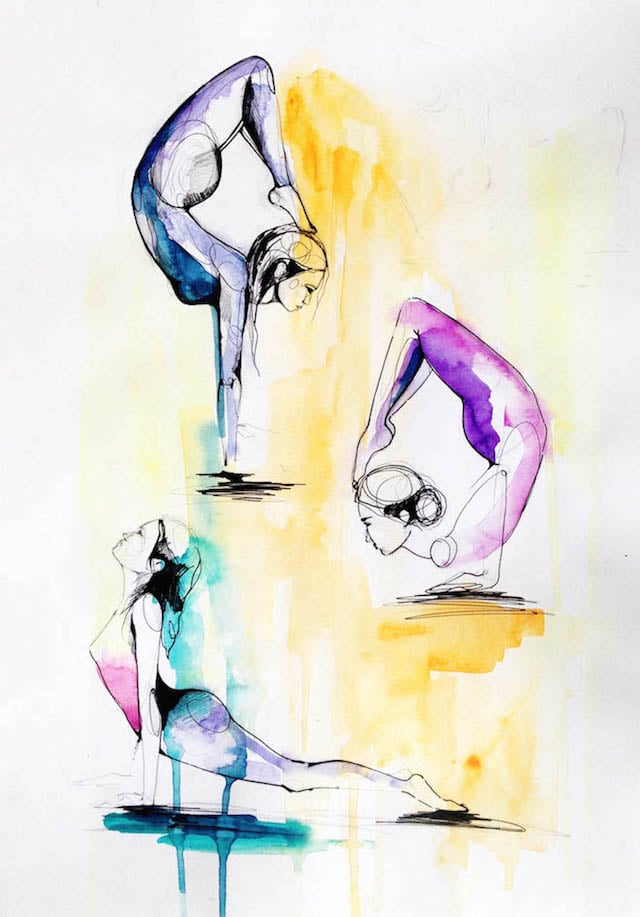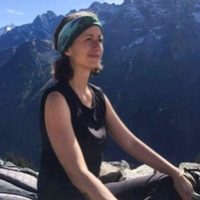You do not have to be a fire for every mountain blocking you. You could be a water and soft river your way to freedom too. ~ Nayyirah Waheed
~
Anger suffers from a bad reputation.
But it isn’t an inherent “negative emotion.” It’s simply an emotion, energy moving through the body, associated with a feeling. Anger is there to teach us, to narrow our attention toward what needs to be focused upon.
Anger is potent. When directed skillfully, powerful actions are set in motion. Anger also points us in the right direction. Rumi, the 13th century Persian poet, realised, “The wound is the place where the light enters you.”
We need to pay close attention to where it hurts—in ourselves, our society, our environment. Without anger, we can lack the forward momentum toward positive change. It is through anger that we’re motivated to act, to fiercely support others, to demonstrate for what we believe in, to let the light enter.
Dealing with anger is far from easy though.
Anger is seductive, trying to lure us into temper tantrums, throwing ashtrays, or spitting out hurtful words. When we react to anger in this way, the transformative energy simply evaporates, leaving us empty-handed and (maybe) embarrassed.
Anger can also easily overwhelm us, catapulting us into a catatonic state of nonaction. Sometimes, we just don’t know how to react aptly in the face of frustration, injustice, or personal assault.
According to Traditional Chinese Medicine (TCM), anger and compassion are two sides of the same coin. If we practice to move past our initial reactivity, we can respond to what provoked our anger with more kindness, compassion, and skill.
In TCM, all major emotions are associated with a certain organ and its respective meridians (an invisible network of energy channels connecting the entire body).
According to TCM, anger corresponds with the liver. Holding onto anger may compromise our liver’s ability to fulfill its task as our major gland and detoxifier. This may express itself in fatigue, digestion issues, abdominal pain, nausea, and blurred vision. Vice versa, a compromised liver function can lead to irritability, outbursts of anger, and prolonged frustration.
The following Yin Yoga sequence is designed to support you in times when you feel grumpy, frustrated, or furious. It’s meant to affect the liver meridians, running from the top of the big toes, up the inner leg lines, through the groin, and into the liver and gallbladder. From there, moving up through the lungs, and eventually, into the head.
Please know, it’s not uncommon to encounter strong sensations and emotions while lingering in these poses. The encouragement is to practise to abide with the turmoil as best as you can, trying to neither push it away, nor get lost in it.
If you experience a lot of agitation, you might explore bringing your attention into your physicality: where in the body do you feel sensations? Are they achy, dull, warm, or cold? Is there a fluidity to them, an ebb and flow?
Bringing ourselves back into our bodies can support us when the going gets tough, so we can learn to stay tender and soft in the face of anger. And eventually, learn to respond, not to react to it.
Please note: practise with caution.
Not all poses are suitable for everybody, especially when dealing with specific injuries and conditions. Move out of a pose immediately if you experience any pain, stabbing, tingling, electrical sensations, or numbness. Go only as far as feels sustainable and workable for you.
Holding times are just recommendations. You can always come out of a pose earlier or stay longer, if that’s what your body is asking for. Take your time to transition between poses.
Grounding with wide-legged Child’s Pose (5 minutes)
From a kneeling position, with your toes touching, spread your knees as far apart as feels workable. Look for a stretch through the inner leg lines and groin. Let your upper body melt onto your thighs and your forehead rest on your forearms, a block, or the floor.
Bring your awareness to your breath. Sense how it moves your belly against the resistance of your thighs. Let this sensation anchor you in the present moment. Without struggle or strain, try to gently lengthen your exhales over time. Try to stay connected to this full and slow belly breath throughout the entire practise.
Sphinx (5 minutes)
From Child’s Pose slide onto your belly. Prop yourself up onto your forearms with elbows shoulder width apart. You are looking for a mild compression in the lower back and an opening through the front body. To decrease intensity, walk your forearms further away from you. For an increase, bring your forearms higher, placing them onto blocks or a folded blanket.
Return your awareness to your breath softly moving the belly, this time against the floor. To release, lower back down and rest for a few breaths.
Dragonfly (5 minutes)
Slowly come back up to a seated position and swing your legs out on front of you. If your lower back is sensitive, sit up on a folded blanket or a block. Take your legs as wide apart as comfortably possible.
Stay upright or, to the degree you can, fold forward in between your legs, allowing gravity and time to slowly take you deeper. If the backs of your legs are tight, try bending your knees. Support yourself with blocks under your forearms or forehead. You’re looking for a stretch along the inner leg lines, the groin, and maybe along the spine.
To come out, slowly roll up and help your legs together with your hands. Come to hands and knees. Move your spine and hips around in any way that feels delicious right now.
Dragon Cycle (3/2/1 minutes on each side)
From hands and knees step the right foot forward to the outside of your right hand for Low Flying Dragon. Walk the front (right) foot out to the right, turning the toes out slightly. Cushion your back (left) knee with a folded blanket. You can stay up on your hands or lower down onto your forearms (optional blocks under the forearms). Let the hips sink heavily towards the floor. Stay for up to three minutes.
Continue by rolling onto the outer edge of your front (right) foot and mindfully letting the knee drop to the side for Winged Dragon. Stay for up to two minutes.
Finally, return the sole of the front (right) foot to the floor. Your left hand is on a block or the floor. Place your right hand on your right thigh and rotate your chest toward the right for Twisted Dragon. Stay for one minute and then switch sides.
Half or Full Shoelace (3 to 4 minutes each side)
From hands and knees cross your right knee behind your left. Spread your feet apart to sit down in between your heels for full shoelace pose. Maybe elevate your hips with a block or blanket. If you feel any pain in the lower (right) knee, straighten that leg completely for Half Shoelace. If the top (left) knee experiences any discomfort, put a folded blanket or a block between your knees.
For more sensation through the outer hip lines, experiment with folding forward over your legs. Make sure to progress slowly and keep the weight back into the hips to avoid putting pressure into the knees.
To release your hips after Shoelace, sit down with your knees bent, feet mat width apart, hands behind your back and, chest lifted. Let your knees mindfully drop from side to side like windshield wipers.
If neither variation of Shoelace works for you, sit cross-legged with shins parallel to the front edge of your mat and fold forward from there. Switch the crossing of your shins to change sides.
Reclined Twists (3 to 4 minutes each side)
Lay down onto your back and hug both knees into your chest. Bring your arms out to the side like the letter T and let your knees drop to the right, stacking your hips on top of each other. If your knees don’t easily reach the floor, put a blanket or a block between or underneath them. Your head can turn either way, depending on the comfort of your neck.
Savasana
Make yourself as comfortable as you can. You can lie on your back, maybe with a support under your head and knees. Or curl up on either side, if that feels more comfortable.
If you have an extra blanket, place it folded over your lower abdomen and hips. The added weight can create a wonderful calming effect for your whole body.
To help you settle, sense into the heaviness of the physical body laying on the floor. Bring a gentle awareness to those body parts that are in close contact with the quiet ground beneath you. Allow yourself to rest in stillness for as long as you can.












Read 8 comments and reply